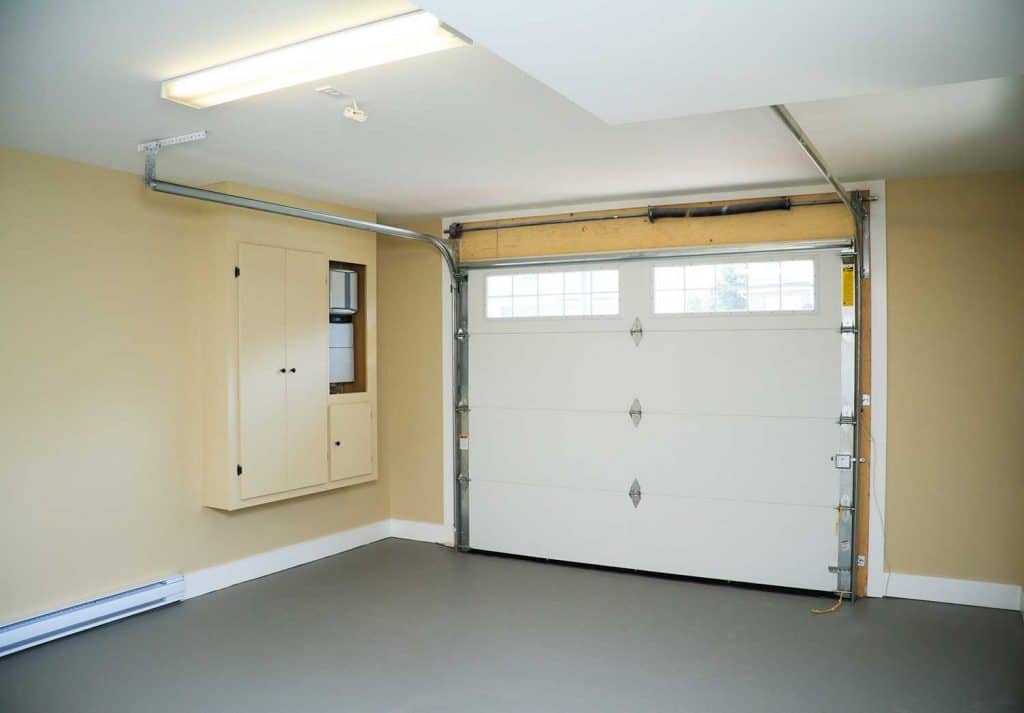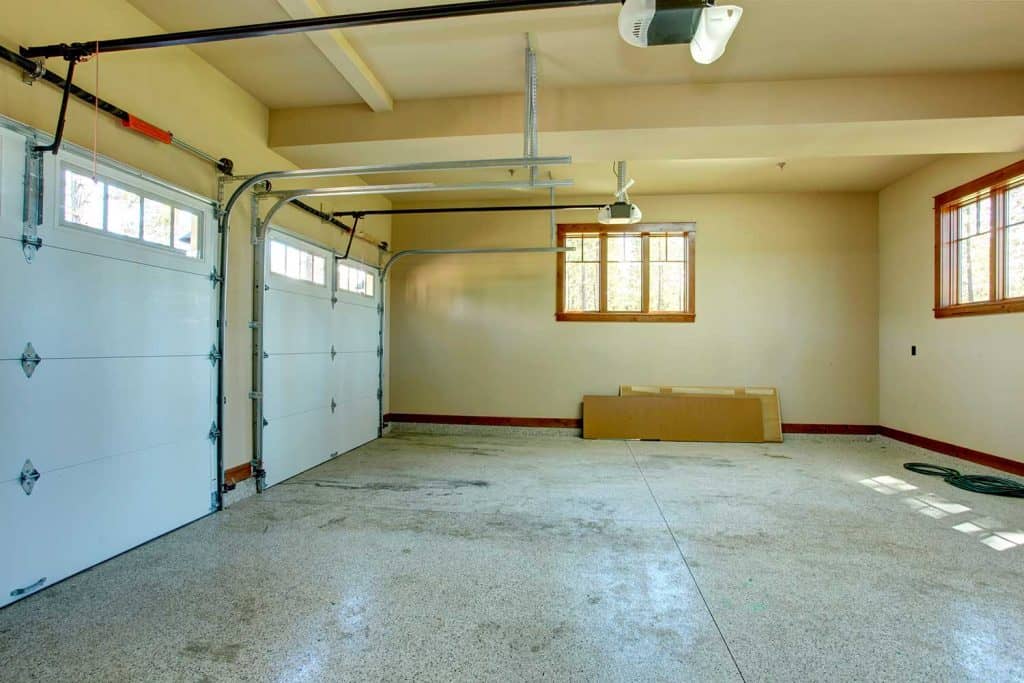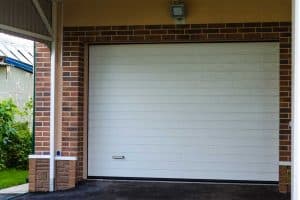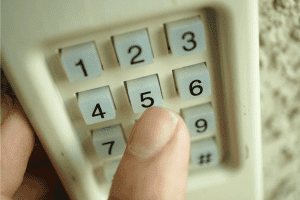For some of us, the garage door has surpassed the front door as our preferred doorway. When you're thinking about buying or replacing a garage door, there's a lot more to consider. Primarily, you may be wondering if garage doors come with their own tracks. We've done our research to give you the best answers to satisfy you.
Each garage door comes with its own set of tracks. Certain manufacturers produce adjustable garage door tracks. However, they rarely work consistently.
Since we're more likely to enter and exit our houses with the click of a remote than the turn of a key, garage doors are there for better or worse. However, for someone who isn't very knowledgeable about garage doors but is considering purchasing one, this post is for you. Continue reading as we'll discuss not only garage door tracks but all parts that come with a pre-purchase garage door.

Are garage door tracks universal?
Manufactured garage doors always come with their own set of tracks and primarily will operate with their pre-manufactured sets. This is a problem if you want to retain your old garage door tracks and pair them with a new garage door panel. Technically, your garage door track will only work correctly if you replace your garage door panel with the same brand or product you used to have.
Although some manufacturers produce adjustable garage door tracks, these are not as good as using the original sets of tracks that your panel has because they may cause problems in the long run due to compatibility issues.
As much as possible, if you desire to replace your garage door with a new one, try and replace your old tracks to eliminate early damage to your new one. If you still want to learn if garage door parts are universal, make sure to read this helpful guide about the types and basics of garage doors.
What parts come with a new garage door?

Garage doors aren't difficult to operate. Aside from coming with their set of tracks, most garage doors are made up of a few interconnected pieces that perform crucial operations.
If you desire to install a new garage door opener or repair an existing one, you must first grasp the system's basic components. You'll be able to figure out why and how the garage door travels up and down once you understand the various garage door parts and their functions.
To help you become more familiar with the numerous characteristics and garage door part names, here's an outline of each garage door's key parts.
Tracks and Rollers
Tracks and rollers worked together to move the garage door panel in its place. The tracks hold a predetermined path to prevent the door from careening off to one side.
Small wheels that run the length of both sides of the garage door are known as rollers. They're mounted in metal tracks that trace the garage door’s path when it opens and closes. As the mechanism lifts the garage door, the rollers run down the inside of the tracks, maintaining it straight up and down. As a safety precaution, if your garage door ever gets off this track, it will not be able to open.
To prevent future damage and to prolong your roller’s lifespan, you should lubricate it twice a year or when you hear squeaking noises whenever you open and close your garage door.
Door Opener
The door opener receives the signal from the switch and remote when you press the button to open the door. It's where the motor resides, and it's what creates the energy needed to activate the mechanism.
Tube
The tube shaft that runs above the garage door holds the torsion springs in place. The tube does not move on its own. Its existence, on the other hand, allows the springs to function properly.
Springs
Springs contain elastic potential energy that can be used to provide enough force to counteract the weight of the door. This is why you're not carrying nearly the whole weight of a garage door when you physically lift it.
Drums
The drums are pulley wheels attached to the ends of the tube shafts. When the energy trapped in the springs is released, the drums rotate. Because the drums are attached to the cables, the rotation causes the cables to move.
Cables
These metal lifting cables from each side of the door serve as a connecting point between the opening mechanism and the door itself. The cable begins to roll up as the drum rotates. As the cables are pushed higher, the door is raised as well.
Brackets and Hinges
The garage door mechanism is held together by both brackets and hinges. The metal components that secure the cables and rollers to the garage door's sides are known as brackets.
The garage door hinges are in the middle of the door. The door is made up of several door panels that fold together when it opens, allowing it to transition from vertical to horizontal seamlessly. Because the hinges hold the various panels together while still allowing them to fold, this is possible.
Safety Sensors
Garage doors are huge and heavy, and if not properly controlled, they may be a safety concern. As a result, garage doors are equipped with photo-eye safety sensors intended to avoid any mishaps.
These sensors are facing one other, and one shoots a light beam into the lens of the other. As long as this beam is intact, the door will function properly. The door may not close if the second sensor cannot detect light, which may occur if something obscures it. This is a safety mechanism to help prevent your garage door from not operating correctly.
Emergency cords
Another safety feature is the emergency cord. We bet you've never used one of these, but we know you've almost certainly known of it. It's usually fastened to the door operator and finished with a red tag to make it visible to you. When you pull the emergency cord, it disengages the opener's motor.
If you need to do maintenance on the door without risking it opening or shutting automatically, or if you need to raise it halfway, this function comes in handy. Because the springs will continue to work regularly, you may manually lift the door even if the motor is turned off. You won't have to worry about the door moving on its own if you pull the cord.
Can you install a new garage door on old tracks?

Perhaps you'd want to combine your old garage door track with new panels. According to ArmRLite, your garage door track was made specifically for a specific brand or panel. Installing a new garage door panel to your old door track can cause hazards for you and can damage your new door panel as well.
Each garage door has its own offset. They virtually all are, meaning that the manufacturer has set a predefined distance or length for them.
How do you replace a garage door track?
It is not difficult to replace the garage door track; however, it is labor-intensive and time-consuming. Furthermore, due to the weight of garage doors, you will almost certainly want assistance.
- To replace your old garage door track, you must contact your garage door manufacturer or go to your home appliance center where you bought it to have the proper track for your panel.
- Next is to unscrew and remove all of the hinge pins and rollers from your track. Lift the garage door and remove the springs that keep it open, have someone assist you when doing this to prevent accidents.
- Try and push the garage door out of the way and avoid breaking the hinges on the opposite track's roller pins. If this isn't feasible, remove the hinges and pens on the side of the door and leave them away until they can be replaced.
- Mark the location of your old track with a pencil before removing it. After unscrewing your old door track, start aligning your new set of door tracks to the mark you have left prior to removing your old door track.
- After the new door track was installed, reposition the door panel back to its place with the help of your assistant. Start installing the hinge pins and rollers back to the track. Lubricate your rollers and tracks to have a smooth door panel operation.
How much does it cost to replace a garage door track?
If your garage door does not open or close the way it should be, hangs unevenly, or the wheels are moving unevenly in the tracks, you have track difficulties. The typical cost of repairing or replacing garage door tracks is between $125 and $400, with an additional $50 to $100 if the tracks are needed to be replaced.
The Bottomline
Each garage door is offered with its own set of tracks. Adjustable rails are made by certain manufacturers, although they seldom function uniformly. To put it another way, there's a strong possibility that your future garage door repair will have to be a whole replacement, including all parts.



